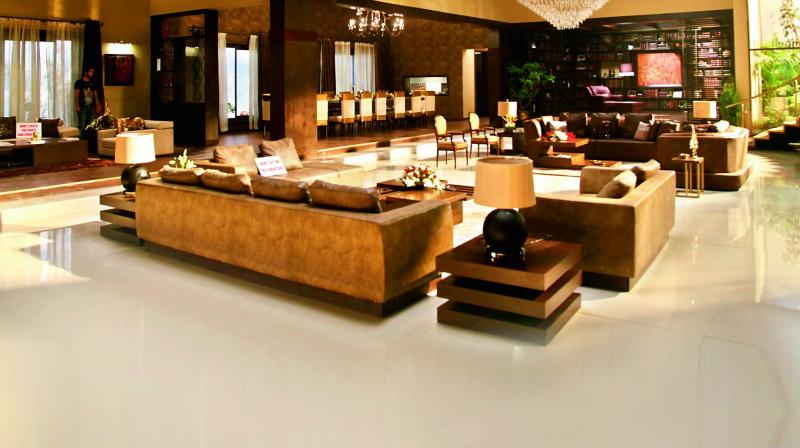‘Set’ting it right
DECCAN CHRONICLE. | JULIE SAM
Published Feb 28, 2016, 12:26 am ISTUpdated Feb 28, 2016, 12:26 am IST
Aparna describes the experience of designing the set for the film as “going back to school”. She had previously worked on several television commercials, and films like Nishabd, Tevar and Any Body Can Dance. But Neerja has been her most ambitious project.
“There was a lot of research, and a lot of homework. I had a few references, so I started working on the layout, and later moved on to scale drawings, and 3D drawings. I had to refer to every resource available online, including a website that was set up by former employees of Pan Am.
I consulted pilots, aeronautical engineers and flight attendants and read the flight manuals of the Boeing 747. The hard work has paid off and the results are there for the world to see,” she says.
Aparna’s ascent into set design was not planned. In 2002, she left Simla for Mumbai to pursue her professional ambitions, starting out as an interior designer. “I was working with an architect for almost six years before I took the leap,” she tells us. “One day, my sister asked me if I would like to assist a production designer. I jumped at the offer. Since then, there has been no looking back.”
One of the major attractions of working in the field of set/production design is tackling the challenges that each day brings. Explaining how she takes these challenges head-on, Aparna says, “Designing and creating is always subjective — there needs to be a balance between technique and art; creativity needs to merge with form. Sometimes you even need to have sound construction skills on the job! But I love what I do. With a job like mine, there is always something new to explore. There is always something to look forward to and create. You think of something today, and three days later, it’s right in front of you. My job gives me a huge high!”
As she starts work on a project, at first Aparna fills up her diary with doodles. Then, more details are added to these sketches. “My work always starts out as doodles. As I get more inputs, I build on it. Later, the doodle turns into something real; ready to be captured on screen for posterity. That’s the magic of creation — whether it’s a small apartment of a small-town girl or a massive aircraft, the processes are the same, and each of this includes honesty and a positive spirit,” Aparna says.
Ask her about the artist who has inspired her work and Aparna promptly names Gustav Klimt, and more specifically, his work “The Kiss (Lovers)”. “The Kiss swept me off my feet,” Aparna shares. “The emotion, the colours, the form, the design — it comes together to tell a tale. To get all of this together is something that I find immensely beautiful.” While she strives to get all of these elements into her own work as well, Aparna says that she doesn’t abide by a design philosophy as such. “Every principle is important, but there is no mantra to designing right,” she says.
“If a set of principles and rules ever existed, then designing would be the easiest profession ever. Every design evolves with time and vision.” On Aparna’s wish list is a chance to recreate the Mughal dynasty from scratch, for the screen. A period film aficionado, she says, “I would love to work on a period film. Mughal-e-Azam is among my favourite films, and it is quite a challenge to recreate that era.” Is our film industry listening?


